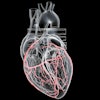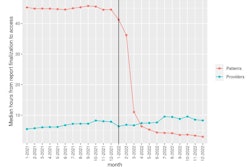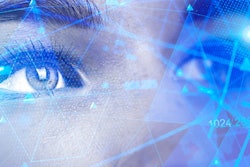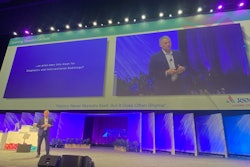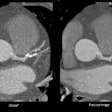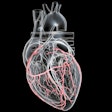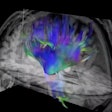When information-blocking provisions of the 21st Century Cures Act took effect in 2021, providers faced the need to make test results -- including radiology reports -- accessible to patients at the same time they were available to referring physicians. To help make these results easier to understand for patients, researchers are exploring the use of technologies such as video radiology reports, AI algorithms, and ChatGPT.
As patients can now access their radiology reports before speaking with the ordering physician, there's been concern that patients may misunderstand the findings. In May 2022, RSNA News cited lifting embargos on radiology reports as a key issue, suggesting radiologists would be pressured to produce reports deemed “clear and impactful for two very different audiences: physicians and patients.”
 Michael Recht, MD, of NYU Langone Health.
Michael Recht, MD, of NYU Langone Health.
However, that hasn't turned out to be an issue, according to Michael Recht, MD, Louis Marx professor and chair in the department of radiology at NYU Langone Health. Recht spoke to AuntMinnie.com during a break at the International Skeletal Society’s annual meeting in London. He explained that when it comes to removing embargos, radiologists’ perspectives haven’t changed since the mandated shift to early access to images.
“I think a lot of the referring physicians’ perspectives have changed,” said Recht, who specializes in musculoskeletal radiology at NYU Langone Health.
The radiology department at NYU Langone Health interprets about 2 million examinations each year from six hospitals, several level 1 trauma centers, and more than 50 outpatient imaging centers throughout New York City and Long Island.
New approaches
“A lot of referring physicians were nervous that patients were going to see the report before they did and then call them with additional questions. In some cases that did happen,” Recht said, adding that the team of researchers at NYU Langone has developed and continues to test new ways to share imaging studies and radiology reports, including using cinematic-rendered images and large-language models (LLM) such as ChatGPT.
“Several years ago, we started doing multimedia reports where we embedded images and tables into a written report,” Recht explained, adding that greater than 80% of patients have online access. “Over the past two years, we've developed what we call the video radiology report, which is where radiologists have been creating a patient-friendly report which concentrates on one or two major findings of the exam.” This is in addition to the traditional written report.
For its part, the NYU Langone Health team is now testing a combination of video radiology reports and ChatGPT.
“We tested it on images from all of our different subspecialties, whether it be neuroradiology or musculoskeletal radiology or just radiology, and different modalities,” Recht explained. “What we're working on is taking this impression, feeding it through the LLM with the proper prompt, getting it translated into patient-friendly language. The radiologist now only has to designate the image that they want to be embedded into the video, with any annotations they want, and then we're letting GPT-4 translate it, letting the radiologist authenticate it, and then using a text-to-audio on it so that the voice is actually a computer-generated voice, then creating a video where the radiologist doesn't have to spend that time and thinking about what language to use.”
Recht added that training OpenAI'S subsequent GPT-4 model with the proper writing prompts is time-consuming; a lot of time is being spent tweaking the prompt to get the right response.
Warning for patients
Patient education has been considered to be an important potential application for large-language models in radiology. For example, a recent study led by Qing Lyu of Wake Forest University School of Medicine found that ChatGPT and GPT-4 could successfully translate radiology reports into plain language with an average score of 4.27 on a five-point scale. What's more, GPT-4 offered even better report translations than ChatGPT.
But issues can still occur with the use of these technologies.
“People are saying that patients can just take the report and put it into ChatGPT themselves,” Recht continued. “The problem is that it doesn't always come up with the right answer, even with the right prompt. The more you look at it, you can see some of the errors that it makes."
As a result, “It's really critical that a radiologist authenticate each report, just like we authenticate all of our voice recognition reports,” he said. “I'm a little bit nervous about just letting patients put their report in and hoping that ChatGPT gets it right and doesn't give them a wrong answer.”
Recht added that he believes using AI will become the norm for a significant number of radiology reports and, for now, video reports will stick to simpler cases.
“We want to start with the low-hanging fruit first and then go to the more complex," he said
A diagnosis of new cancer or metastatic disease is not appropriate for a video report, Recht noted.
Impact on radiologists
An initial study conducted in 2021 by researchers led by Hailey Choi, MD, an assistant professor of radiology at University of California, San Francisco (UCSF), found that the majority of radiologists weren't impacted by open access to imaging results. In an anonymized survey of 254 radiologists at three institutions in 2021, 76% felt no impact on their role as radiologists; 11.8% felt negative; and 9.3% felt positive. Also, nearly two-thirds were never approached by patients, according to the multi-institutional study.
 Hailey Choi, MD, of UCSF.
Hailey Choi, MD, of UCSF.
However, the state of California did act to address one of the biggest challenges associated with open and early access to imaging findings: receiving potentially life-changing results such as a new cancer diagnosis without speaking to a physician. A bill (SB 1419) was signed into law in October 2022 with the aim of ensuring that patients decide how they would like to receive information regarding their imaging scan results, rather than learning about it immediately online by default, according to a California Medical Association news brief.
Specifically, the law does the following:
- Allows physicians time to interpret potentially life-changing test results before releasing them to the patient electronically
- Provides additional protections in law for very sensitive data, such as teen mental health and reproductive data
- Clarifies that clinical notes are considered part of the patient medical record
"When the mandate [of open access] took place, everything was immediately released to the patient upon final signing," explained Choi. "This included a new diagnosis of cancer and potentially more worrisome findings for the patients. That was a challenging time for us. Then, California law allowed us to hold the information from patients if it contains a new diagnosis of cancer."
Choi said the exception created a need to provide options in the patient portal to facilitate meeting the new regulations handed down in SB 1419: a question at order entry, where the referring clinician answers yes/no if the report should be held to allow discussion with the patient. Radiologists can also tag these reports with a code triggering a delay in the result release, Choi said.


